4.7 Curb Ramps.
4.7.1 Location.
Curb ramps complying with 4.7 shall be provided wherever an accessible route crosses a curb.
4.7.2 Slope.
Slopes of curb ramps shall comply with 4.8.2. The slope shall be measured as shown in Fig. 11. Transitions from ramps to walks, gutters, or streets shall be flush and free of abrupt changes. Maximum slopes of adjoining gutters, road surface immediately adjacent to the curb ramp, or accessible route shall not exceed 1:20.
Fig. 11 Measurement of Curb Ramp Slopes
4.7.3 Width.
The minimum width of a curb ramp shall be 36 in (915 mm), exclusive of flared sides.
4.7.4 Surface.
Surfaces of curb ramps shall comply with 4.5.
4.7.5 Sides of Curb Ramps.
If a curb ramp is located where pedestrians must walk across the ramp, or where it is not protected by handrails or guardrails, it shall have flared sides; the maximum slope of the flare shall be 1:10 (see Fig. 12(a)). Curb ramps with returned curbs may be used where pedestrians would not normally walk across the ramp (see Fig. 12(b)).
Fig. 12 Sides of Curb Ramps
Fig. 12 Sides of Curb Ramps
4.7.6 Built-up Curb Ramps.
Built-up curb ramps shall be located so that they do not project into vehicular traffic lanes (see Fig. 13).
Fig. 13 Built-Up Curb Ramp
4.7.7 Detectable Warnings.
A curb ramp shall have a detectable warning complying with 4.29.2. The detectable warning shall extend the full width and depth of the curb ramp.
4.7.8 Obstructions.
Curb ramps shall be located or protected to prevent their obstruction by parked vehicles.
4.7.9 Location at Marked Crossings.
Curb ramps at marked crossings shall be wholly contained within the markings, excluding any flared sides (see Fig. 15).
Fig. 15 Curb Ramps at Marked Crossings
4.7.10 Diagonal Curb Ramps.
If diagonal (or corner type) curb ramps have returned curbs or other well-defined edges, such edges shall be parallel to the direction of pedestrian flow. The bottom of diagonal curb ramps shall have 48 in (1220 mm) minimum clear space as shown in Fig. 15(c) and (d). If diagonal curb ramps are provided at marked crossings, the 48 in (1220 mm) clear space shall be within the markings (see Fig. 15(c) and (d)). If diagonal curb ramps have flared sides, they shall also have at least a 24 in (610 mm) long segment of straight curb located on each side of the curb ramp and within the marked crossing (see Fig. 15(c)).
Fig. 15 Curb Ramps at Marked Crossings
4.7.11 Islands.
Any raised islands in crossings shall be cut through level with the street or have curb ramps at both sides and a level area at least 48 in (1220 mm) long between the curb ramps in the part of the island intersected by the crossings (see Fig. 15(a) and (b)).
Fig. 15 Curb Ramps at Marked Crossings


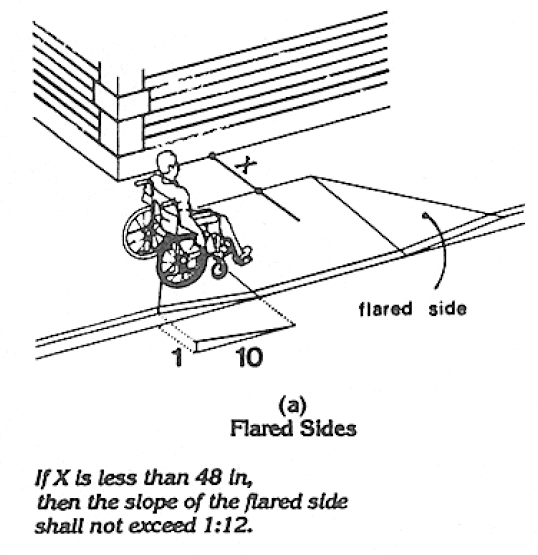
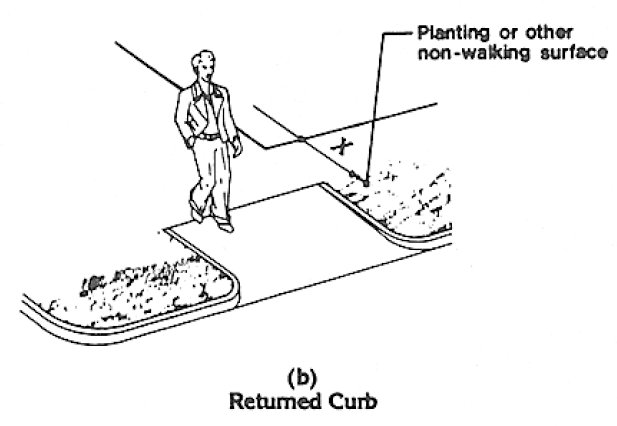
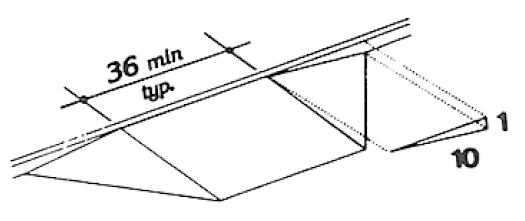
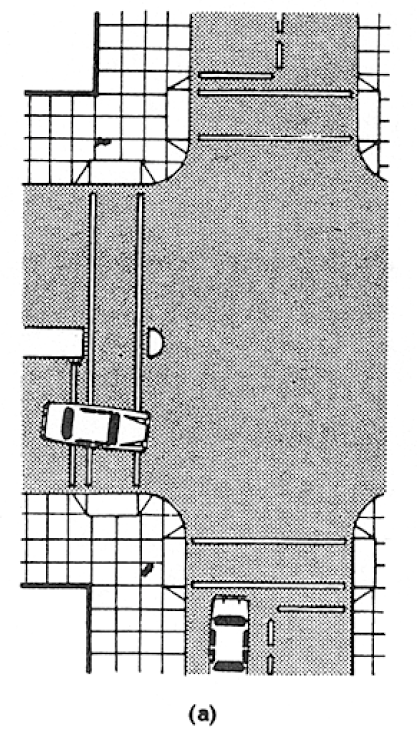
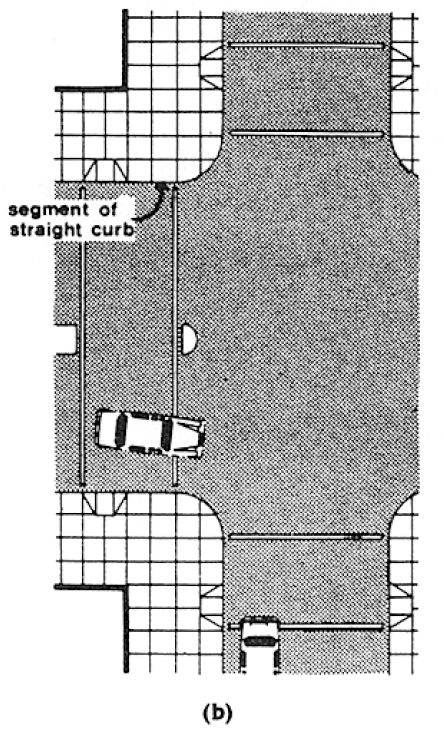
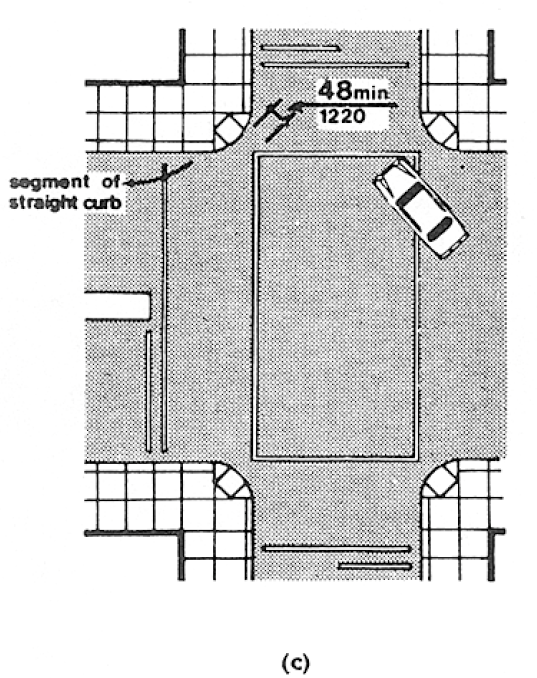
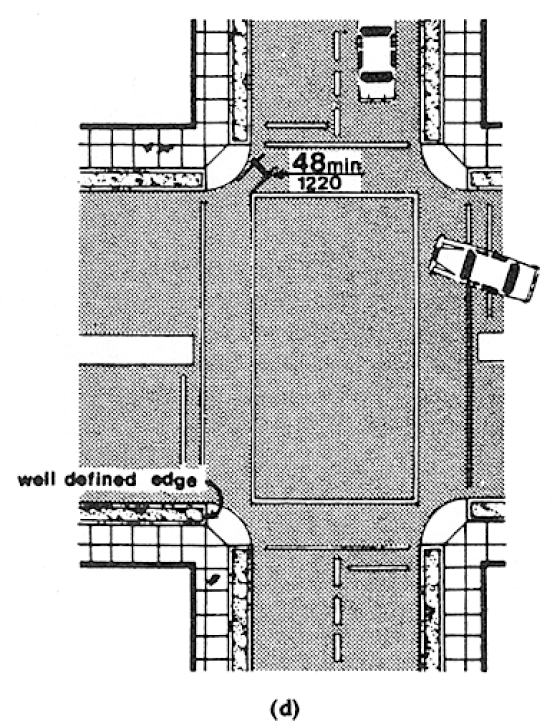
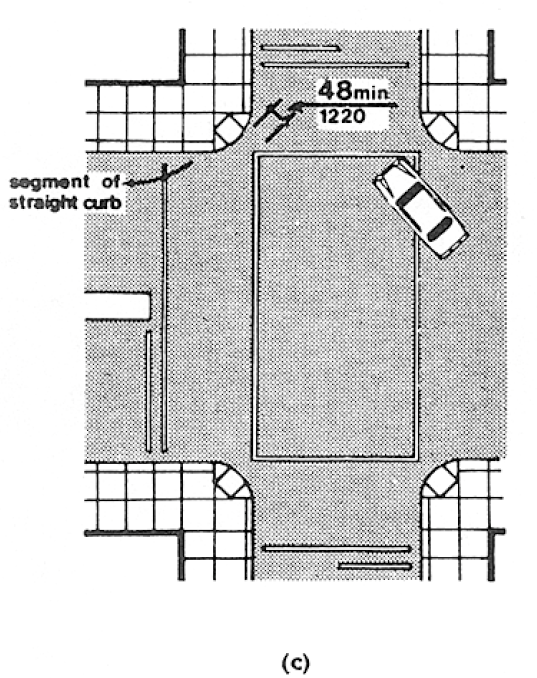
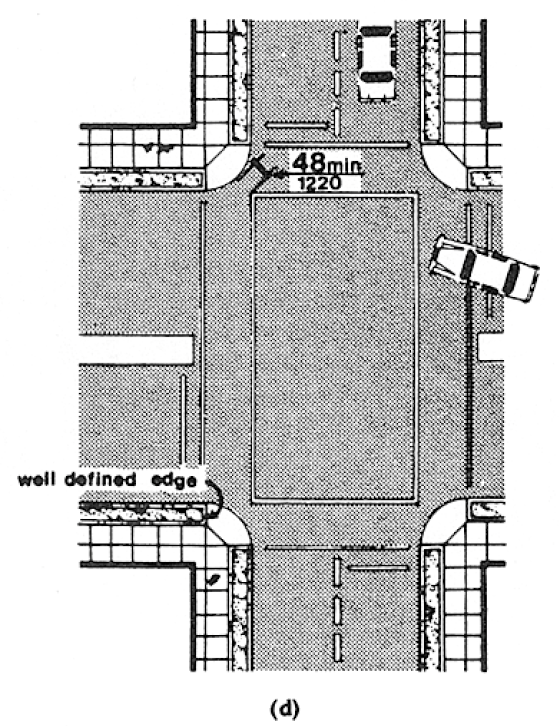
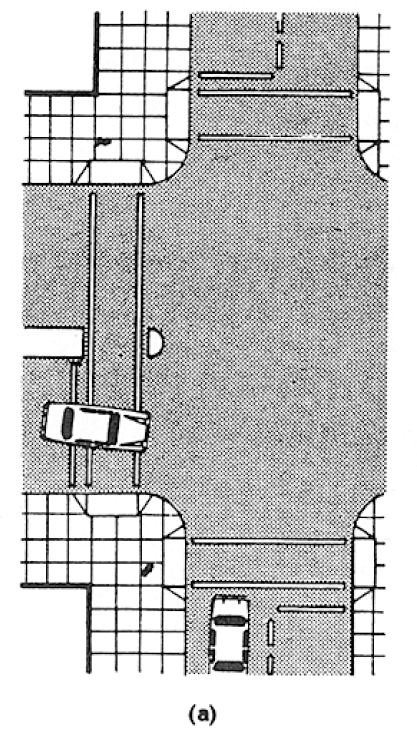
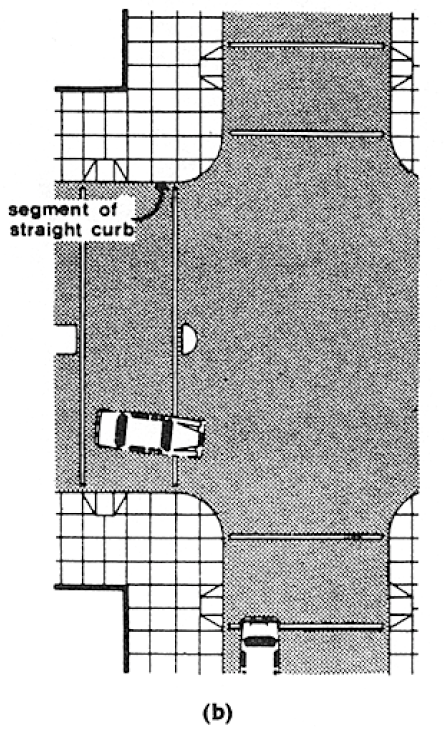
User Comments/Questions
Add Comment/Question